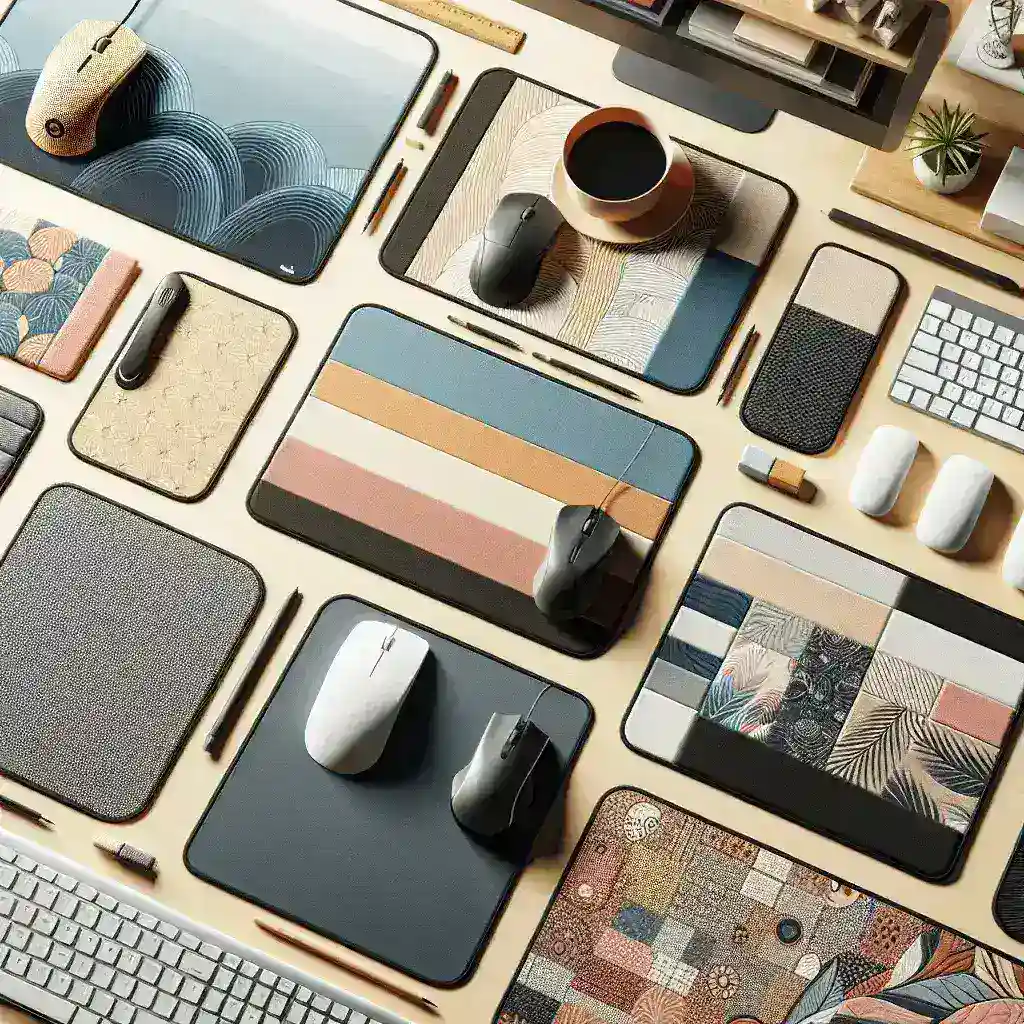Choosing the right mouse pad can significantly enhance your computing experience. With various options available, understanding the characteristics of each can help in making an informed decision. The right mouse pad can improve the precision of your movements, enhance comfort during extended use, and even complement the aesthetic of your workspace.
| Type of Mouse Pad | Material | Pros | Cons |
|---|---|---|---|
| Hard Surface | Plastic, Metal | Fast movement, easy to clean | Less comfortable, may not have a grip |
| Soft Surface | Fabric, Cloth | Comfortable, good for wrist support | Can wear out quickly, harder to clean |
| Extended Mouse Pad | Fabric | Large surface area, great for both mouse and keyboard | Bulky, may not fit all desks |
| Gaming Mouse Pad | Fabric, Plastic | Designed for precision and speed | Typically more expensive |
| Ergonomic Mouse Pad | Memory Foam, Gel | Provides wrist support, reduces strain | Can be bulky, may not allow for fast movement |
Types of Mouse Pads
Let’s delve deeper into the different types of mouse pads available on the market:
1. Hard Surface Mouse Pads
Hard surface mouse pads are typically made from materials like plastic or metal. They offer a smooth texture, allowing for fast mouse movements and precise tracking.
Pros:
- Allows for quick and smooth movements.
- Easy to clean.
- Durable and long-lasting.
Cons:
- Can be uncomfortable for prolonged use.
- May not have a non-slip base.
2. Soft Surface Mouse Pads
These mouse pads are often made from fabric or cloth materials, offering a soft texture under your hand. They are generally comfortable to use, especially for long periods.
Pros:
- Comfortable for extended usage.
- Provides good wrist support.
Cons:
- Can wear out more quickly than hard surface pads.
- May be challenging to clean.
3. Extended Mouse Pads
Extended mouse pads combine ample space for both the mouse and keyboard. They are made from fabric and can cover a larger area of your desk.
Pros:
- Spacious surface for movement.
- Visually appealing when matching with desk setups.
Cons:
- Can be bulky and consume desk space.
- May not fit into smaller desks.
4. Gaming Mouse Pads
Designed specifically for gamers, gaming mouse pads come in both hard and soft surfaces, featuring advanced technology to enhance precision and speed.
Pros:
- Optimized for quick and precise movements.
- Often features anti-slip bases.
Cons:
- Usually more expensive than regular mouse pads.
- May not be necessary for casual use.
5. Ergonomic Mouse Pads
Offering wrist support, ergonomic mouse pads are made from materials like memory foam or gel. They prioritize comfort and reduce strain on the wrist during extended use.
Pros:
- Supports wrist health and comfort.
- Reduces risk of repetitive strain injuries.
Cons:
- Usually bulkier than standard pads.
- Might limit the speed of mouse movement.
Considerations in Choosing a Mouse Pad
When selecting a mouse pad for everyday use, consider the following factors:
1. Surface Type
Do you prefer a smooth or textured surface? A smooth surface is excellent for rapid movement, while a textured surface can provide more control.
2. Size
Your workspace will dictate the size of the mouse pad. Ensure that it fits comfortably on your desk without crowding other essential items.
3. Comfort
If you spend long hours at the computer, look for a mouse pad that offers wrist support to reduce strain and enhance comfort during use.
4. Material
Consider the material based on how you plan to use it. Hard pads are often preferable for gaming, while soft pads might be better for office work.
5. Cleaning and Maintenance
Choosing a mouse pad that is easy to clean can save you time and maintain hygiene in your workspace.
Conclusion
Ultimately, the best type of mouse pad for everyday use depends on individual needs and preferences. Hard surface pads are excellent for speed and precision, while soft surface pads offer comfort. Ergonomic options can reduce strain, and extended pads provide larger areas for movement. It’s essential to consider your specific usage patterns to find the perfect match.
In summary, regardless of your choice, investing in a good mouse pad can enhance your overall computing experience. Make sure to evaluate your daily tasks and comfort needs when making your decision.

